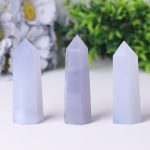A Testament to Earth’s Volcanic Fury
Volcanic stone, a captivating material forged in the bowels of the Earth during explosive eruptions, commands our awe with its remarkable attributes and aesthetic beauty. These stones, remnants of molten rock that cooled and solidified, bear witness to the planet’s violent geological history.

Composition and Characteristics
Volcanic stones are predominantly made up of silica, a compound that forms crystalline structures when subjected to intense heat and pressure. Depending on the specific geological conditions, they can manifest in various forms:
- Obsidian: A volcanic glass formed from rapidly cooled lava, exhibiting a smooth, glassy surface.
- Pumice: A highly porous, lightweight volcanic rock with a sponge-like texture.
- Basalt: A dense, dark-colored stone characterized by its compact structure.
- Scoria: A rough, vesicular rock with a frothy appearance.
Applications in Architecture
The exceptional properties of volcanic stone have made it a prized building material throughout history. Architects and designers have harnessed its strength, durability, and unique aesthetic qualities to create architectural marvels:
-
Strength and Durability: Volcanic stone’s remarkable compressive strength and resistance to weathering make it ideal for load-bearing structures, retaining walls, and outdoor flooring.
-
Thermal Insulation: Its porous structure traps air, providing excellent thermal insulation properties that reduce energy consumption and enhance indoor comfort.
-
Aesthetic Appeal: The natural beauty of volcanic stone, with its variegated textures and colors, adds a touch of rugged elegance to any architectural design.
Sustainable and Environmentally Friendly
In an era of growing environmental consciousness, volcanic stone shines as a sustainable building material. Its natural origin and resistance to decay eliminate the need for chemical treatments and contribute to a healthier indoor and outdoor environment.
-
Lifespan: Volcanic stones are highly durable and can withstand centuries of exposure to harsh elements without significant deterioration.
-
Recyclability: Volcanic stone can be crushed and reused as an aggregate, minimizing waste and promoting a circular economy.
Innovative Applications
Beyond traditional architectural applications, volcanic stone has sparked creative thinking in various industries:
-
Landscaping: Its irregular shapes and porous nature make it an attractive material for rock gardens, water features, and retaining walls.
-
Interior Design: Architects and designers are incorporating volcanic stone into countertops, fireplace surrounds, and decorative accents to bring a touch of nature indoors.
-
Jewelry and Art: The unique textures and colors of volcanic stone have inspired artisans to create stunning jewelry, sculptures, and other works of art.
Market Statistics and Future Prospects
The global market for volcanic stone is projected to reach USD 1.5 billion by 2027, exhibiting a steady growth rate of 5.6%. This growth is attributed to:
- Rising demand for sustainable building materials
- Increasing urbanization and construction activities in emerging economies
- Growing appreciation for the aesthetic and functional properties of volcanic stone
Case Studies and Testimonials
Architects and homeowners alike have embraced volcanic stone for its versatility and aesthetic appeal:
-
“The volcanic stone retaining wall we installed in our backyard not only provides structural support but also adds a stunning natural element to our outdoor space.” – Mary, homeowner
-
“Volcanic stone’s thermal insulation properties made it an ideal choice for the walls of our new eco-friendly home.” – John, architect
Effective Strategies for Using Volcanic Stone
To maximize the potential of volcanic stone in architectural projects, consider these strategies:
-
Careful Selection: Choose the type of volcanic stone based on the specific application and desired aesthetic.
-
Proper Installation: Ensure skilled masons or contractors install volcanic stone correctly to ensure durability and functionality.
-
Seal and Protect: Apply a sealant to volcanic stone surfaces exposed to moisture or harsh elements to enhance their longevity.
Conclusion
Volcanic stone, a testament to the Earth’s volcanic power, offers a unique blend of strength, durability, and aesthetic appeal that has captivated architects and designers for centuries. Its sustainable nature and innovative applications make it a valuable asset for eco-conscious building projects and creative endeavors alike. As we continue to explore its potential, volcanic stone remains an exceptional material that will continue to shape our built environment and inspire generations to come.
Tables
Table 1: Physical Properties of Volcanic Stones
| Property | Obsidian | Pumice | Basalt | Scoria |
|---|---|---|---|---|
| Density (g/cm³) | 2.4 – 2.6 | 0.2 – 0.8 | 2.7 – 3.0 | 0.5 – 1.2 |
| Hardness (Mohs scale) | 5 – 6 | 5 – 6 | 5 – 6 | 4 – 5 |
| Compressive strength (MPa) | 100 – 200 | 1 – 2 | 150 – 300 | 50 – 150 |
| Thermal conductivity (W/m·K) | 0.7 – 1.0 | 0.1 – 0.2 | 1.0 – 1.5 | 0.5 – 0.8 |
Table 2: Applications of Volcanic Stones in Architecture
| Application | Type of Volcanic Stone | Benefits |
|---|---|---|
| Load-bearing structures | Basalt, Obsidian | Strength and durability |
| Retaining walls | Basalt, Scoria | Strength, durability, and drainage |
| Outdoor flooring | Basalt, Scoria | Durability, slip resistance, and aesthetic appeal |
| Thermal insulation | Pumice | Trapping air, reducing energy consumption |
| Decorative accents | Obsidian, Pumice | Unique textures and colors |
Table 3: Sustainable Features of Volcanic Stones
| Feature | Benefit |
|---|---|
| Natural origin | Reduces environmental impact |
| Durability | Long lifespan, minimizing waste |
| Recyclability | Crushed stones used as aggregate |
| Resistance to decay | Eliminates chemical treatments |
| Low embodied energy | Requires less energy to extract and process |
Table 4: Emerging Applications of Volcanic Stones
| Application | Industry | Benefits |
|---|---|---|
| Rock gardens | Landscaping | Natural and decorative element |
| Countertops | Interior design | Durability, heat resistance, and aesthetic appeal |
| Jewelry | Arts and crafts | Unique textures and colors |
| Sculptures | Arts and crafts | Naturalistic and inspiring material |



























